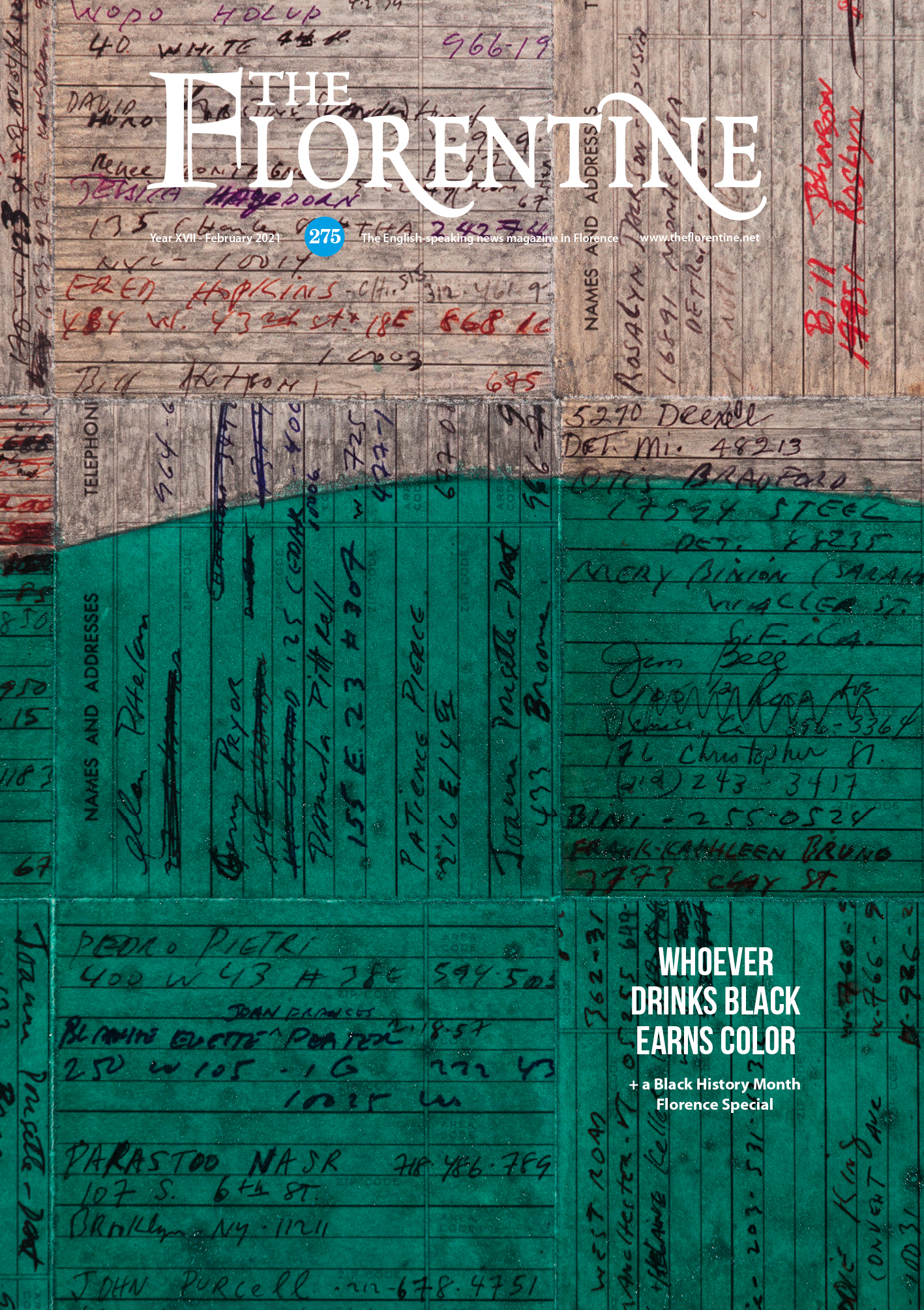In this text, I would like to share some of the reflections I developed with artist Binta Diaw on the occasion of an exhibition held at the Museo MA*GA in Gallarate (Milan). We produced a collaboration titled Nero Sangue, in which we reflected on the exploitation of the Black Body imbued with logics of exploitation and control, from our own different perspectives. In particular, we investigated the labour in tomato fields of the south of Italy performed predominantly by Black migrants, in connection to highly exploitative and racialized forms of labour that reflect practices of modern slavery.

Binta Diaw. Nero sangue. Museo-MA-GA. Photo: Jemma Robin Thompson
As a scholar working on issues of race and colonialism in Italy and being a Black Italian woman, I reflected on the meanings of inhabiting a Black body, especially the historical racialization of labour used to perpetuate imperial and colonial settlements and desires.
As James Baldwin states, the historical production of the Black Body is imbued with pain and terror. This is reiterated also by Martínican author Frantz Fanon, who wrote about the “expérience vécue du Noir” in his topical volume Black Skin, White Masks. According to Fanon, the lived experience of Blackness is characterised by a state of chronic uncertainty in which one may see the image of one’s own body denied and crystallized by the white gaze. “The white look, the only true look” would write Fanon, highlighting the power of the white gaze as a tool able to define, imprison and kill the racialised “Other”.
In relation to the production of the Black Body in the Italian context, one ought to consider the role played by the colonial and fascist invasion of East Africa, beginning with the creation of the first colony in Eritrea in 1890, and followed by the invasion of Somalia and later Ethiopia in 1936. The combination of colonialism, fascism and conceptualisations of race and identity produced specific forms of exploitation and representation of the “Black subject”. In my research, I focused on the visual representation of the exploitation of the Black body produced by the colonial and fascist regime. While spending time at the former Istituto Agronomico per l’Oltremare in Florence, I had the opportunity to analyse a range of images depicting the flora and fauna of the former colonies. Similar to the different kinds of plants and flowers meticulously sampled and classified by the colonial explorers, Africans were portrayed as “nature” immersed in vegetation, often from behind, sitting, and surrounded by cattle. This was done to show a supposed physical, mental and technological superiority of the Italian race.
Blood seems to be one of the connecting elements between those representations of racialised bodies performing labour and the blood shed by the Black Body today, bent in the fields picking tomatoes, at risk of dying due to lack of drinking water, lack of health care, lack of safety and rights. Yet, the Black Body has historically shown us resistance and agency as weapons of liberation and how the body itself, from organic matter, may become a political body on which to inscribe indelible messages. This is a body under threat of constant loss, and yet a body that exposes itself and resists.

This article was published in Issue 275 of The Florentine: A Black History Month Florence special.





